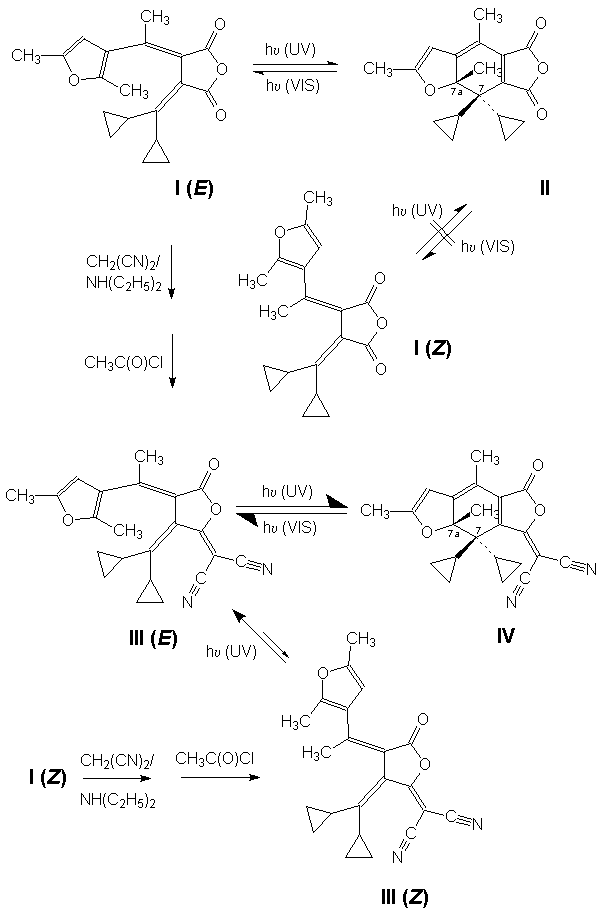
Third International Electronic Conference on Synthetic Organic Chemistry (ECSOC-3), www.mdpi.org/ecsoc-3.htm, September 1-30, 1999
[A0031]
Photochromic Fulgides: Transformation of Non-phtochromic (Z)-Isomer of a Fulgide into Highly Phtochromic (E)-Isomer via Structural Modification Containing Enhanced Conjugation
Zhiyuan Sun and Ramachandra, S. Hosmane*
Laboratory for Drug Design and Synthesis, Department of Chemistry
& Biochemistry
University of Maryland, Baltimore County (UMBC), 1000 Hilltop Circle
Baltimore, Maryland 21250, USA
E-mail: hosmane@umbc.edu
Received: 17 August 1999 / Uploaded: 21 August 1999
Keywords: Fulgides, Photochromic Compounds, Synthesis, Optical Data Storage, Holograms.
Fulgides are a class of organic compounds that undergo photochromically reversible color and structural changes, called photochromism. This property has a number of practically beneficial implications including optical data storage, waveguides, holograms, photochromic lenses, integrated optics, sunlight attenuation, and sensor protection. We have synthesized two isomeric fulgides, I (E) and I (Z), and have discovered that only the I (E) isomer exhibits photochromism. Thus, upon irradiation with a UV light at max 350 nm, the nearly colorless I (E) undergoes conrotatory electrocyclic ring-closure to form the colored cyclized product II which absorbs in the visible region at max ~600 nm. The colored product II reverts back to colorless I (E) upon irradiation with a visible light at max ~530 nm. The I (Z) isomer, on the other hand, is unable to cyclize under the same conditions, apparently because of its structural constraints for cyclization. We reasoned that the introduction of additional conjugation in the molecule would facilitate photochemical isomerization of the Z isomer into the required E form for cyclization with UV irradiation. To this end, compounds III (E) and III (Z) were synthesized from I (E) and I (Z), respectively, and were both found to exhibit photochromism. Another added advantage of enhanced conjugations in III (E) and III (Z), as compared with I (E) and I (Z), is the absorbance at a higher wavelength (max ~620 nm) region. The latter property is anticipated to improve semiconductor laser compatibility of fulgides. It is believed that for a sufficiently high decoding (erasure) sensitivity, the colored products must exhibit absorbance in considerably long wavelength (visible) region.

All comments on this poster should be sent by e-mail to (mailto:ecsoc@listserv.ariz ona.edu) ecsoc@listserv.arizona.edu with A0031 as the message subject of your e-mail.